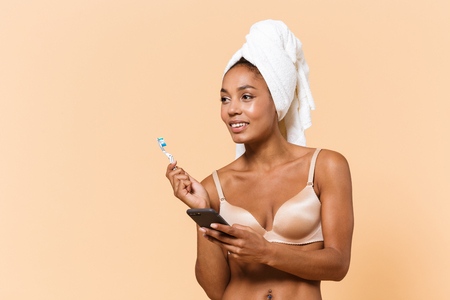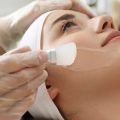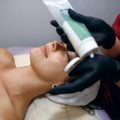1. The Connection Between Lifestyle Choices and Cosmetic Outcomes
When you invest in cosmetic treatments—whether it’s Botox, fillers, laser therapy, or skin tightening—you want those results to last as long as possible. But did you know that your everyday habits can play a huge role in maintaining your cosmetic results? In the U.S., where busy lifestyles and fast food are common, understanding how daily choices impact your appearance is essential for getting the most out of your beauty treatments without spending extra money.
How Diet Impacts Cosmetic Results
Your skin and body need nutrients to heal, regenerate, and look their best. A balanced diet rich in fruits, vegetables, lean proteins, and healthy fats supports collagen production and reduces inflammation, both of which are important for lasting cosmetic outcomes.
| Diet Habit | Effect on Cosmetic Results |
|---|---|
| High sugar intake | Can increase inflammation and break down collagen faster |
| Hydration (drinking water) | Keeps skin plump and helps healing after procedures |
| Omega-3 fatty acids (e.g., salmon, walnuts) | Supports skin elasticity and reduces redness |
| Antioxidant-rich foods (berries, spinach) | Protects against free radical damage and promotes recovery |
The Role of Sleep in Skin Health
A good night’s sleep is more than just beauty rest—it’s when your body repairs itself. During deep sleep, blood flow to the skin increases and new cells grow faster. This means that consistent sleep can help prolong the effects of cosmetic treatments by supporting natural healing processes.
Tips for Better Sleep:
- Aim for 7-9 hours each night
- Create a bedtime routine to help you relax
- Avoid screens at least 30 minutes before bed
- Keep your bedroom cool and dark
Physical Activity Supports Lasting Results
Exercise boosts circulation and delivers oxygen and nutrients to your skin cells. Regular physical activity can also help manage stress—a known trigger for breakouts and premature aging. However, after some procedures, your provider might recommend avoiding intense exercise for a few days. Always follow their advice to protect your investment.
| Lifestyle Habit | Positive Impact on Cosmetic Results | Negative Impact on Cosmetic Results |
|---|---|---|
| Consistent exercise (walking, yoga) | Improves circulation; promotes healing; reduces stress hormones | If done too soon after treatment: swelling or bruising may worsen |
| Poor sleep quality or not enough sleep | – | Slower recovery; dull complexion; more visible signs of aging |
| Nutrient-rich diet vs. processed foods | Sustains youthful appearance; speeds up healing time; boosts energy levels | Poor nutrition leads to slower cell turnover; less radiant results; increased inflammation |
2. Nutritional Strategies for Skin Health
Why Nutrition Matters for Your Skin
Your diet doesn’t just affect your waistline—it plays a huge role in how your skin looks and feels. The right foods can help you maintain that glow after cosmetic treatments, while also keeping your skin firm and youthful. The good news? Many skin-friendly nutrients are easy to find in everyday American foods and don’t have to break the bank.
Key Nutrients and Where to Find Them
Certain vitamins, minerals, and antioxidants are known to support skin elasticity, tone, and overall appearance. Here’s a simple breakdown of what to look for and some affordable food sources commonly found in the U.S.
| Nutrient | Benefits for Skin | Easy-to-Find Food Sources |
|---|---|---|
| Vitamin C | Boosts collagen production; brightens skin tone | Oranges, strawberries, bell peppers, broccoli |
| Vitamin E | Protects from sun damage; moisturizes skin | Almonds, sunflower seeds, spinach, peanut butter |
| Zinc | Helps repair skin; reduces inflammation | Pumpkin seeds, beans, ground beef, whole grains |
| Omega-3 Fatty Acids | Keeps skin supple; fights dryness and redness | Canned tuna, salmon, chia seeds, walnuts |
| Antioxidants (like beta-carotene) | Fights free radicals; keeps skin looking fresh | Carrots, sweet potatoes, kale, apricots |
| Protein | Builds and repairs tissue; supports firmness | Eggs, chicken breast, Greek yogurt, lentils |
| Water (hydration) | Keeps skin plump and glowing | Tap water, seltzer water, fruits like watermelon and cucumber |
Practical Tips for Everyday Eating
- Add color to your plate: Try mixing different colored fruits and veggies for a variety of nutrients.
- Snack smart: Swap chips for a handful of nuts or seeds—they’re full of vitamin E and healthy fats.
- Bake or grill instead of fry: This keeps the good stuff in your food without adding extra oils that can clog pores.
- Stay hydrated: Carry a reusable water bottle with you—hydrated skin starts from within.
- Aim for balance: Include lean proteins and whole grains in your meals for long-lasting energy and better skin health.
A Simple Sample Day of Skin-Friendly Meals (Budget Edition)
| Meal Time | Affordable Example Foods/Meals |
|---|---|
| Breakfast | Sliced oranges with oatmeal topped with sunflower seeds |
| Lunch | Tuna salad sandwich on whole wheat bread with carrot sticks |
| Dinner | Baked chicken breast with roasted sweet potatoes and steamed broccoli |
| Snacks | A small handful of almonds or Greek yogurt with berries |
| Beverages | Mainly water or unsweetened seltzer with lemon slices |
The Bottom Line: Small Changes Add Up!
You don’t need fancy superfoods or expensive supplements to support your cosmetic results. By making simple swaps in your daily meals and choosing nutrient-rich basics at the grocery store, you’ll help your skin stay vibrant—and keep those beauty investments lasting longer.
![]()
3. Staying Active: Movement for Maintaining Results
When it comes to keeping your cosmetic results looking fresh and long-lasting, staying active plays a huge role. Regular movement doesn’t just help you feel better—it actually supports the work youve invested in through nonsurgical or surgical treatments. Let’s break down how getting your body moving can make a difference, and see which activities are most accessible for everyone.
Why Exercise Matters After Cosmetic Treatments
Physical activity boosts your blood circulation, which is essential for healing and maintaining healthy skin. Good circulation means nutrients and oxygen reach your cells more efficiently, helping your body recover and show off the best results from cosmetic treatments. Plus, exercise helps manage weight, improve muscle tone, and even support mental well-being—all factors that contribute to glowing skin and overall appearance.
Accessible Activities to Try
You don’t need a fancy gym membership to stay active. Here are some simple ways to keep moving that fit easily into a busy American lifestyle:
| Activity | How It Helps | Time Needed | Where You Can Do It |
|---|---|---|---|
| Walking | Boosts circulation, easy on joints | 20-30 min/day | Parks, neighborhoods, malls |
| Yoga or Stretching | Improves flexibility and relieves tension | 10-20 min/day | Home, studios, online classes |
| Biking | Tones legs, supports cardiovascular health | 30 min/session | Biking trails, stationary bikes at home or gym |
| Dancing | Lifts mood, burns calories, fun social activity | 15-30 min/session | Home, dance studios, community centers |
| Bodyweight Exercises (like squats, push-ups) | Builds muscle tone for a firm look | 10-15 min/day | Anywhere—no equipment needed! |
The Connection Between Activity & Cosmetic Results
No matter what kind of treatment you’ve chosen—whether it’s fillers, Botox, liposuction, or a facelift—your body benefits from improved circulation and toned muscles. Staying active helps reduce swelling faster after procedures, keeps your metabolism steady (helping maintain weight loss results), and gives your skin a healthy glow. Even light daily movement counts; consistency is key.
4. The Impact of Stress and Sleep on Your Appearance
Many people focus on diet and exercise to maintain their cosmetic results, but two often-overlooked factors are stress management and quality sleep. Both play a huge role in helping you keep that fresh, youthful look after any cosmetic procedure.
How Stress Affects Your Skin
When you’re stressed out, your body releases hormones like cortisol. High levels of these hormones can trigger breakouts, dullness, puffiness, or even speed up the appearance of fine lines and wrinkles. Chronic stress also slows down your skin’s ability to heal and regenerate—making it harder for you to maintain the benefits of your treatments.
Common Effects of Stress on Appearance
| Stress Effect | How It Shows Up on Skin |
|---|---|
| Increased Oil Production | More acne and clogged pores |
| Poor Blood Flow | Dull or tired-looking skin |
| Muscle Tension | Frown lines or jaw clenching |
| Weakened Immune Response | Slower recovery from procedures |
The Power of Quality Sleep
A good night’s sleep is your skin’s best friend! When you sleep, your body repairs itself—including your skin. Skipping out on rest can lead to under-eye circles, sagging skin, and a lackluster complexion. Long-term sleep deprivation makes it tougher for your skin to bounce back after cosmetic treatments.
Sleep & Skin: What Happens Overnight?
| During Sleep… | Your Skin Benefits By… |
|---|---|
| Cell regeneration increases | Smoother, more radiant complexion |
| Cortisol levels drop | Less inflammation and redness |
| Bodily hydration balances out | Reduced puffiness and dryness |
| Blood flow improves | Younger-looking, glowing skin |
Simple Tips for Managing Stress & Improving Sleep
- Create a relaxing bedtime routine—think reading or gentle stretches instead of scrolling through your phone.
- Practice mindfulness or deep-breathing exercises during the day when you feel tense.
- Aim for 7–9 hours of uninterrupted sleep each night for optimal recovery and glow.
- If possible, keep a regular sleep schedule—even on weekends.
- Stay active during the day to help manage stress and promote better sleep at night.
Small Changes Make a Big Difference!
You don’t need expensive products or complicated routines. Just by taking care of your mind and making sleep a priority, you’ll support your skin’s natural radiance—and make those cosmetic results last longer!
5. Everyday Habits to Avoid That Can Diminish Your Results
When you invest in cosmetic treatments, you want your results to last as long as possible. However, some everyday habits common in the U.S. can work against your efforts. By recognizing and changing these habits, you can help protect your appearance without spending extra money.
Common Lifestyle Pitfalls
Here are some American habits that might sabotage your cosmetic results:
| Habit | Why It’s Harmful | Healthier Alternative |
|---|---|---|
| Tanning Beds & Excessive Sun Exposure | UV rays speed up skin aging, causing wrinkles and discoloration. | Use broad-spectrum sunscreen daily; wear hats and sunglasses outdoors. |
| Processed Snacks (Chips, Cookies) | High salt and unhealthy fats can cause puffiness and inflammation. | Choose whole foods like nuts, fruit, or veggie sticks for snacks. |
| High-Sugar Drinks (Soda, Sweet Tea) | Sugar breaks down collagen, leading to sagging skin and dullness. | Opt for water, herbal tea, or sparkling water with lemon. |
| Lack of Sleep | Poor sleep slows skin repair and increases dark circles. | Aim for 7–9 hours of sleep each night to support skin health. |
| Smoking & Vaping | Cuts off oxygen to the skin and accelerates aging signs. | If you smoke or vape, consider talking to a healthcare provider about quitting. |
Simple Tips for Everyday Success
- Plan Ahead: Pack healthy snacks when you’re on the go so you aren’t tempted by vending machines or fast food.
- Create a Routine: Make applying sunscreen part of your morning habit, just like brushing your teeth.
- Find Support: If quitting smoking or cutting back on sugar feels tough, ask friends or family to join you or look for local support groups.
- Stay Hydrated: Carry a reusable water bottle to remind yourself to drink throughout the day.
- Prioritize Rest: Set a regular bedtime—even adults need a sleep schedule!
Your Small Choices Matter Every Day
No matter which cosmetic treatment you choose, simple changes in your diet and lifestyle can make a big difference. Swapping out a few common habits for healthier ones is an easy way to help keep your results looking fresh—without any extra cost.


